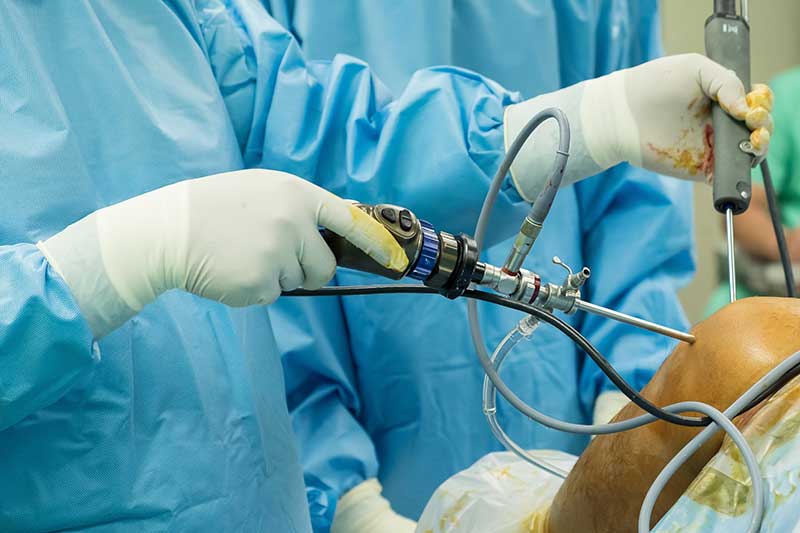The gallbladder is a pear-shaped organ in the upper right side of the abdomen below the liver. Its prime function is to store and deliver bile (a fluid secreted by liver to digest fats).
According to the best gallbladder surgeon in Zirakpur practicing with Amcare hospital, the cancer of Gallbladder is a rare form of cancer which occurs when malignant/cancer cells begin to grow in the gallbladder. It starts in the innermost layer of gallbladder known as the mucosal layer and eventually spreads outward. This article reviews the details of gallbladder cancer
Cause of gallbladder cancer:
Gallbladder cancer occurs due to genetic change or mutation of the healthy cells which turn them into cancer cells. These genetic mutations occur over a span of time and are not biologically inherited. Scientists are still not aware of the cause of these genetic changes or formation of cancer cells.
How common is gallbladder cancer?
It is an uncommon cancer with less than 1,00,000 cases per year in India and less than 2 cases per 1,00,000 people per year in the United States. Still, it is more common in Northern India, Japan, Korea, Poland, central and south America, central and eastern Europe because these countries have higher cases of gallstones and related conditions.
Who are at risk of Gallbladder cancer?
The people with below characteristics are at greater risk of gallbladder cancer:
- Women
- People over 65 years of age
- People with gallstones or history of gallstones
- People with chronic gallbladder inflammation
- People with chronic Salmonella typhi infection (the bacteria causing typhoid)
- People with build-up of calcium deposits in gallbladder known as porcelain gallbladder
- People with chronic inflammation of bile ducts
- People with cysts in common bile duct
- Obese people.
Symptoms:
Gallbladder cancer often doesn’t cause symptoms in the early stages. But eventually when symptoms appear, they include:
- Upper abdominal pain
- Lumps in abdomen
- Yellowed skin /yellowed whites of your eyes/ Jaundice
- Nausea and vomiting
- Unexplained weight loss
- Bloating
- Fever
Gallbladder cancer Stages:
The stages of gallbladder cancer are categorized based on the extent of spread of cancer. These stages are categorized as below:
- Stage 0 (also known as carcinoma in situ): The stage where abnormal cells have grown in gallbladder’s inner (mucosal) layer.
- Stage 1: Cancer cells are present in the mucosal layer and start spreading to the muscle wall of the gallbladder.
- Stage 2: Cancer has spread beyond the muscle wall to the connective tissue layers of gallbladder.
- Stage 3: Cancer has spread to liver and nearby organs and to the outer (serosal) layer of gallbladder and to the lymph nodes.
- Stage 4: Cancer has spread to more than three lymph nodes, blood vessels and organs away from the gallbladder.
Diagnosis:
Gallbladder cancer doesn’t cause symptoms in early stages. Eventually as symptoms appear, they seem similar to symptoms of gallstones or bile duct blockage. It is discovered by chance at the time of gallstones removal surgery or after the surgery. In case, the healthcare providers suspect gallbladder cancer, the below mentioned tests are done to confirm it:
1.Lab Tests: The substances in blood are detected for signs of cancer.
- Liver function test: It measures the levels of liver released substances which is an indication that liver is getting affected by gallbladder cancer.
- Carcinoembryonic antigen (CEA) assay: It measures the CEA levels. of CEA. It is a tumor marker which is released by both healthy and cancerous cells. Higher levels signal gallbladder cancer.
- CA 19-9 assay:It measures the levels of CA 19-9 in blood which is also a tumor marker. Higher levels signal gallbladder cancer.
2.Imaging Tests: These tests allow to look for signs of cancer spread.
- Abdominal ultrasound: These ultrasounds are an imaging test which make use of sound waves to create pictures of organs in abdomen. Additional imaging tests, like CT scan or MRI are needed to be done if an ultrasound detects the mass that can be gallbladder cancer.
- CT (computed tomography) scan: It is a type of X-ray which takes detailed images of internal organs.
- MRI (magnetic resonance imaging): It is an imaging test which uses magnet, radio waves and computer to create pictures of the inside of body.
- Endoscopic ultrasound:It is an ultrasound which makes use of a tube-like instrument called endoscope to create pictures of the digestive tract.
- Endoscopic retrograde cholangiopancreatography (ERCP): It is an X-ray procedure which takes pictures of bile ducts. Gallbladder cancer can cause the narrowing of the ducts.
3. Surgeries: These are procedures which healthcare providers use to directly access the tissues that contain cancer cells.
- Biopsy: It is removal of a sample tissue to examines it under microscope for cancer cells. Biopsy is the only way to confirm gallbladder cancer diagnosis.
- Laparoscopy: It is insertion of a laparoscope which is a thin, lighted tube into abdomen through a small incision to view the gallbladder and nearby tissues. It can help to determine the extent of spread of cancer.
Treatment options available:
The treatment is affected by the stage cancer is in. When the cancer is in early stages, the goal is to remove the cancer and in the later stages, the goal is to manage symptoms of patient and extend his/her life.
Gallbladder cancer treatment in Early-stage cases:
The cancer in earlier stages can be removed via surgery, radiation therapy and Chemotherapy. The treatment outcomes are best in this stage.
- Surgery: Surgery involves the removal of gallbladder and nearby tissues called cholecystectomy. In a basic cholecystectomy, the surgeon only removes the gallbladder. In an extended cholecystectomy, the surgeon removes other tissues with cancer cells like affected lymph nodes or part of your liver.
- Radiation therapy: This treatment is based on use of a machine outside body known as EBRT to direct radiation to the cancer. The radiation kills cancer cells or slows tumor growth with minimum damage to healthy cells. This treatment is done after surgery to kill remaining cancer cells.
- Chemotherapy: Chemotherapy is use of drugs to kill cancer cells and to stop them from multiplying. It also helps in destroying remaining cancer cells after surgery.
Gallbladder cancer treatment in Unresectable, recurrent or metastatic cases:
The stages where cancer can’t be removed by surgery (unresectable), has returned (recurrent) or spread (metastatic) cannot be cured. Radiation therapy and chemotherapy can’t eliminate the cancer but they can improve symptoms and extend life. Patients at such stages can take part in clinical trials for some new treatments. Some of these clinical trials are mentioned below:
- Targeted therapy: Treatment targeting cancer cells carrying certain gene mutations.
- Immunotherapy: Treatment strengthening immune system so it’s able to identify and destroy cancer cells.
- Radiosensitizers: Treatment making cancer cells more sensitive to the radiation therapy effects.




